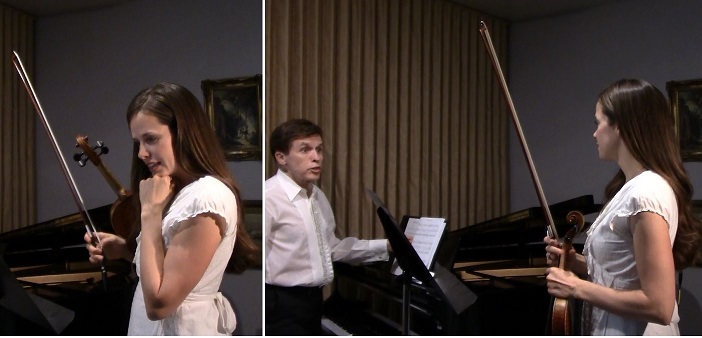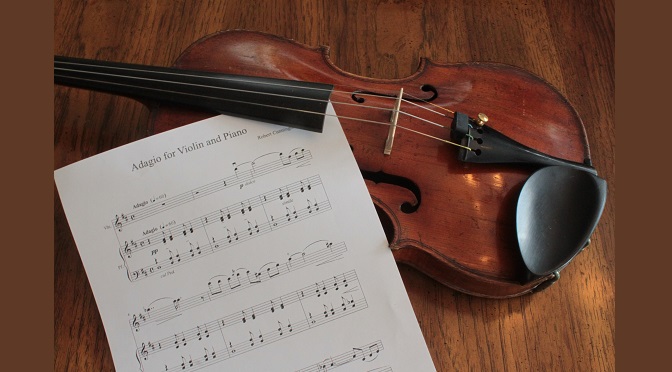The Story of the Adagio

March 21, 1985 was the tricentennial of the birth of Johann Sebastian Bach. On that day I completed my Adagio for Violin and Piano, which has long been my personal favorite among all my non-piano-solo compositions. The composition is about eight minutes long, and like many a Bach slow movement, it features a flowing, sinuous melody against a stately, solemn accompaniment. I dedicated it “to the memory of J. S. Bach.”
When I was a young child, my parents hoped that I would take up the clarinet. But in school (before I took my first formal piano lesson), when we were introduced one by one to all the major instruments of the orchestra, I was instantly entranced by the sound of the solo violin. So it became my first instrument, and I quickly became familiar with its natural harmonic resonances. That was about twenty-seven years before the Adagio, in which I sought to bring out those beautiful resonances. The piano accompanies with a slow, hypnotic, syncopated “heartbeat” rhythm throughout, except for one passage where the piano takes over the melody and the violin takes over the syncopated rhythm.
In the early years after the Adagio was completed, I performed it on my own violin on at least one occasion, but my violin-playing skills fell short of my personal standards, and I longed to hear it rendered by a professional violinist. So I sought avidly for more than three decades to obtain a good recording it, encountering a long string of obstacles and frustrations. Ultimately, I found myself in despair.
On March 1, 1986, I had a successful recording session in Atlanta, GA with a very good violinist, Anne Page. We recorded the piece on reel-to-reel tape, in sections that were to be combined later. Unfortunately, my sound engineer abruptly left town at that point. The project remained unfinished, and I had neither the equipment nor the skills to complete it. Unsure even of the whereabouts of the original master, I tried to reconcile myself to the likelihood that no publishable recording of the Adagio would ever be available. All I had left was a cassette copy of the master.
Then, of course, tapes and cassettes went out of use and were replaced by digital media. In this new age, recordings were made onto .wav files that could be used by amateurs like myself to create publishable videos and/or audio files. In early 2016, I started going through and digitizing my old cassettes and tapes. I listened again to the cassette from the recording session with Ms. Page and found that the sound quality was reasonably good — about as good as one could expect from the cassette medium. Unfortunately, I was never able to obtain the master itself. Meanwhile, still hoping to find a violinist for a new recording, I transcribed my old handwritten Adagio score into Finale (the first page is included in the picture above).
Then on March 7, 2016, I unexpectedly received a positive response from a well-qualified local violinist, Cari Sue Jackson. My long quest appeared to be nearing its end.
Cari and I scheduled our first rehearsal for April 11. She was enthusiastic about the piece, and we recorded it on May 2.

Cari rendered the work with artistic sensitivity, deep feeling, and the kind of rich, beautiful tone that I had had in mind when writing the work 31+ years earlier. I uploaded the audio from that recording to SoundCloud, where it can still be downloaded as an .mp3 file.
I also made a video from it, which I uploaded to the RobertCunninghamsMusic channel on May 5, 2016. It was the first non-piano-solo offering on my channel, which was then only about five months old.
At that time I also uploaded this “score video” version.
Since then, Cari Jackson has brought her great talents to other collaborations with me and other performers in my Horn Trio and Piano Quartet.

